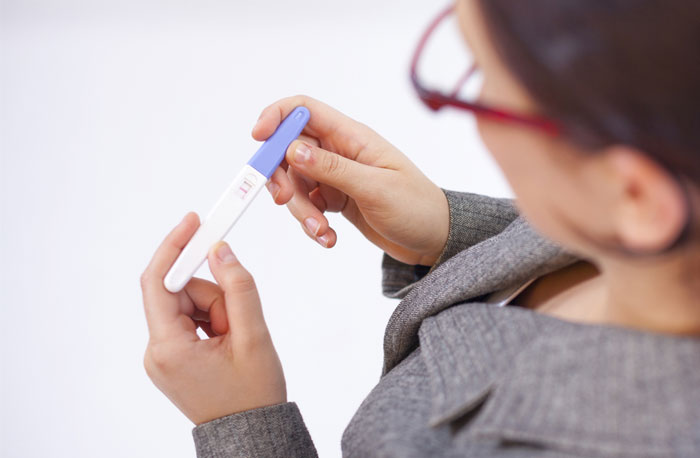Infertility: How and Why Age Is a Factor

Answer a few questions and we'll provide you with a list of primary care providers that best fit your needs.
What is Infertility?
Infertility is a problem of the reproductive system that affects the body's ability to reproduce. Difficulty may occur in the female system, male system, or a combination of factors for both partners.
There’s a lot that goes into making a baby. That means a lot can go wrong, too. The sperm and egg both need to be healthy, the fallopian tubes need to be open, the sperm needs to be able to fertilize the egg, and the egg has to implant in the uterus. On top of that, the embryo must be healthy. If just one of those is off, that can lead to infertility.
Infertility is not just a woman's concern. Half the time, a male problem causes or contributes. For many couples, more than one factor plays a role. In a few cases, a cause for infertility can’t be found.
If you think you’re unable to get pregnant, see your doctor early.
How Does Age Contribute to Infertility?
A woman’s age and ovarian function are key factors when assessing infertility. According to Jeremy Groll, MD, SpringCreek Fertility, “A woman is born with all the eggs she will have in a lifetime. As a woman ages, her pool of eggs starts to decline. Usually this starts to happen over the age of 32 and more rapidly over the age of 35.”
Aging decreases a woman’s chances of having a baby in several ways:
- Your ovaries become less able to release eggs.
- You have a smaller number of eggs available.
- Your eggs are not as healthy.
- You are more likely to have health conditions that can cause fertility problems.
- You are more likely to have a miscarriage.
A woman should seek assistance if:
- She is under age 35, has regular monthly periods and is unable to conceive after one year of unprotected intercourse.
- She is over 35, has regular monthly periods and is unable to conceive after six months of unprotected intercourse.
- She is over age 40 and is unable to conceive after three months of unprotected intercourse.
- She does not have regular monthly menstrual periods or has another risk factor for infertility.
How is Infertility Diagnosed?
To diagnose infertility, your health care provider will evaluate both you and your partner. Your primary health care providers may do a basic infertility evaluation. However, you might be referred or you might choose to see a board-certified reproductive endocrinologist. This is an OB/GYN who specializes in infertility and is certified with the American Board of Obstetrics and Gynecology.
Your doctor is looking for answers to these questions:
- Are you ovulating regularly?
- Is your partner making healthy sperm?
- Are your egg and your partner’s sperm able to unite and grow normally?
- Are there any problems with implantation?
- Are you able to maintain the pregnancy?
A woman’s age and ovarian function are key factors when assessing infertility.
What to Expect When Being Diagnosed
Be prepared to answer a lot of really personal questions at this point. Your doctor will take a full health and sexual history for both you and your partner. It might feel intrusive, but your answers will help the doctor determine any physical causes of infertility and find out if you are having sex at the right time.
In addition to your history, you might also have any of the following tests:
For You
- Physical exam. You will have a complete physical exam, including a Pap test and testing for infection.
- Ovulation evaluation. You can check to see if you are ovulating by tracking your periods, keeping a basal body temperature chart (this is your morning body temperature), checking urine ovulatory predictor kits and looking for symptoms of ovulation.
- Hormone testing. Hormone testing may be recommended. Certain hormones increase and decrease during the monthly cycle. If the hormones are not being released normally, it can affect fertility.
- Ultrasound. Ultrasound shows ovarian follicles (fluid sacs which contain eggs), ovarian cysts, fibroids, and the thickness of the lining of the uterus.
- Uterine and fallopian tube testing. This testing checks to make sure the uterine cavity (where the baby grows) is normal and that the fallopian tubes are open (how sperm can get to the egg).
- Hysterosalpingogram (HSG) is a test that uses dye injected through the uterus and fallopian tubes and x-rays.
- Saline-infused sonogram (SIS) is a test that uses saline injected through the uterus and fallopian tubes and ultrasound.
For Him
- Semen analysis. A semen sample is taken and tested in the lab. This test looks at several factors related to overall sperm health and function. It checks for:
- How many sperm are produced (count)
- The movement of the sperm (motility)
- Shape of the sperm (morphology)
Other tests may be done that test the sperm's ability to penetrate the egg, as well as male hormone testing.
Men may be sent to a urologist for further testing.
Answer a few questions and we'll provide you with a list of primary care providers that best fit your needs.
Source: Centers for Disease Control and Prevention; Jeremy Groll, MD, SpringCreek Fertility; Gynecology





